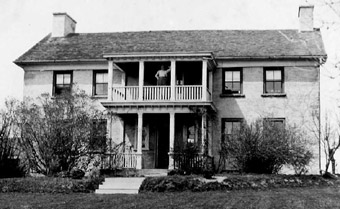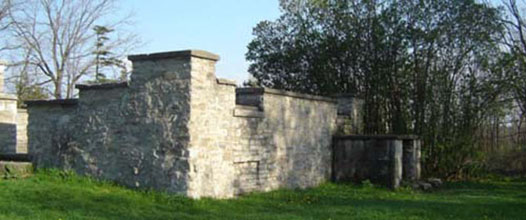Home | Places to Explore | Historic Destinations
Decew (DeCou) House
Decew House is named after its builder, John DeCou, who immigrated to Upper Canada from his birthplace in 1766 in Vermont. His parents were United Empire Loyalists.
He married Catherine Docksteter, the daughter of Frederick Docksteter, a member of Butler's Rangers in 1798. Together John and Catherine raised eleven children.
John purchased land along the Beaverdams Creek, a tributary of the Twelve Mile Creek and built several mills which served the surrounding farmers. John DeCou was responsible for building the first sawmill in the region.
A short distance from one of his mills he built a two story house with limestone walls 66 centimetres (26 in) thick. John Decou would eventually serve in the military during the War of 1812.
In the spring of 1813 he was taken prisoner by the Americans. The fighting between the Americans had intensified and Catherine Decou was forced to flee with her family to the saftey of Burlington Heights (Hamilton).
During this time the house was occupied by a small group of Loyalist soldiers under the direction of Lieutenant James Fitzgibbon. In June of 1813, Laura Secord, was residing in the community of Queenston, Ontario. The area was infiltrated with American troops and Laura Secord happened to overhear plans by the Americans to overtake Fitzgibbon and his troops at Decou.
Laura Secord took it upon herself to make the arduous journey to DeCou to alert Fitzgibbons. To avoid detection by the patroling American troops Laura Secord chose an old Indian trail, that took her through the woods from Queenston to St. Davids, eventually Shipman's Corners (now St. Catharines), and eventually on to Decou House, a distance of about 32 kms, or apx 20 miles.
It is because of her actions that Fitzgibbons, alerted to the impending attack, was able to rally his men and make a decisive victory over the Americans. This victory would prove to be a positive turning point for the British in the War of 1812.


